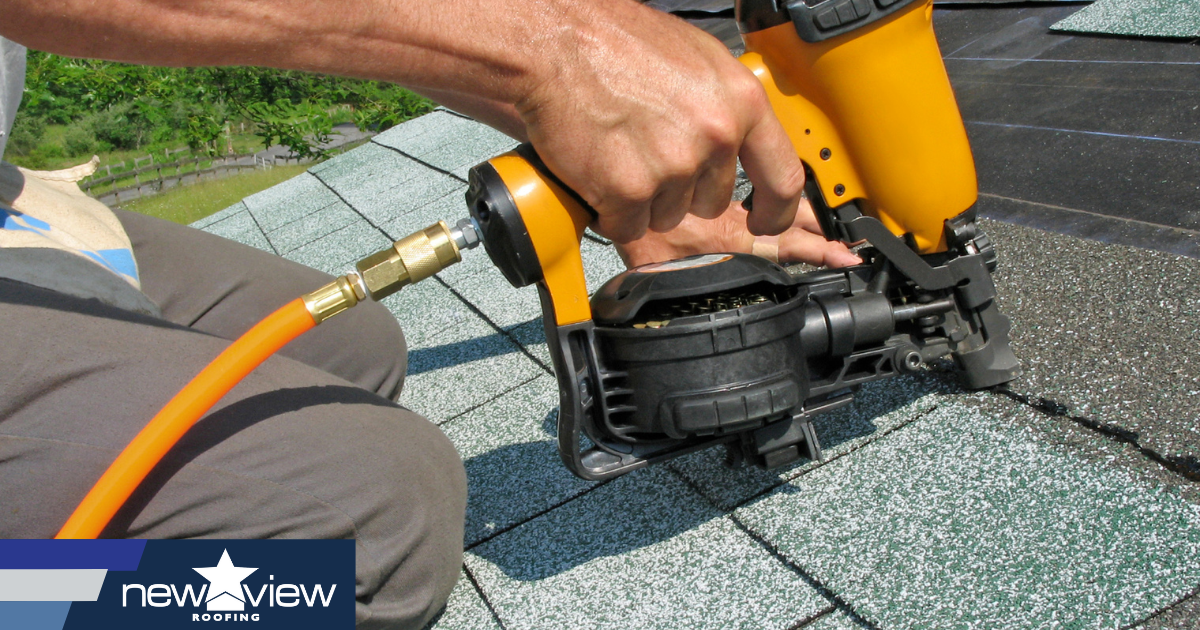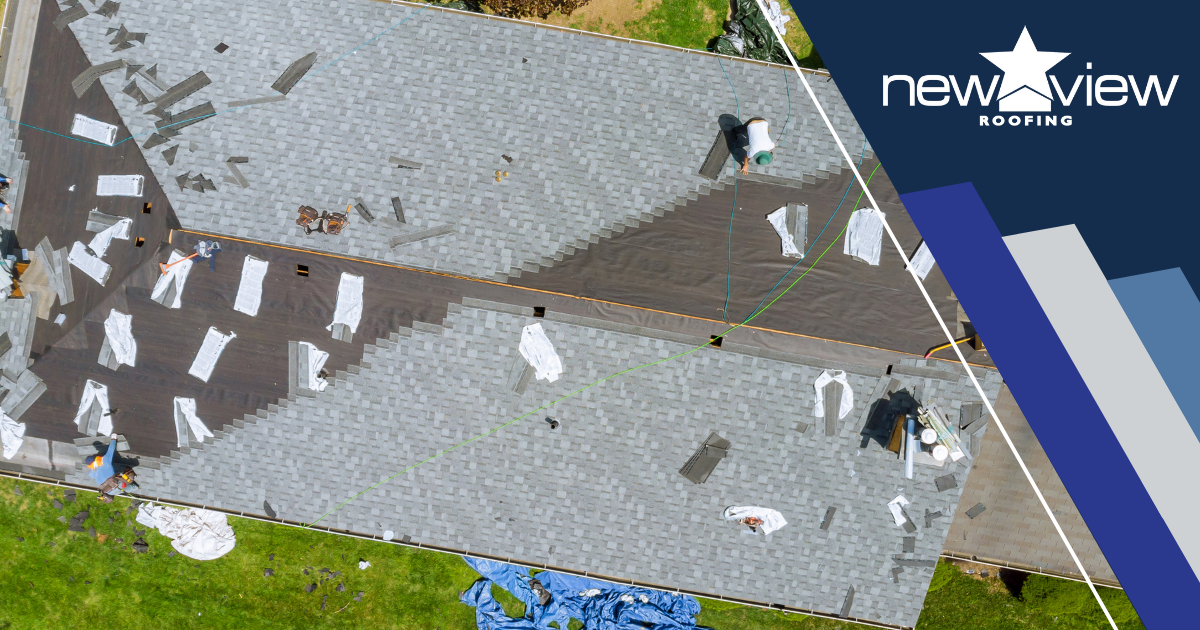The Ultimate Dallas Roofing FAQ
If you’re like many people, you don’t think too much about your roofing materials – that is, until there’s a problem. But keeping tabs on your roof can save you a significant amount of money, and that includes knowing everything you can about your roofing materials, how much replacement roofing costs, and other information that you need.
Check out our Dallas roofing FAQ to get answers to your questions about roofs, materials and more. If you don’t see your question answered here, call our office to ask – we’ll be happy to provide you with the answers you need.
When Do I Need a New Roof?
 All roofs age, and generally – at least with asphalt shingles – you need a new roof when yours is between 20 and 30 years old. (A good rule of thumb to follow is to watch when your neighbors start getting new roofs; there’s a good chance that their homes are about the same age as yours is, so when they start hiring Dallas roofing companies, it may be time for you to do the same.)
All roofs age, and generally – at least with asphalt shingles – you need a new roof when yours is between 20 and 30 years old. (A good rule of thumb to follow is to watch when your neighbors start getting new roofs; there’s a good chance that their homes are about the same age as yours is, so when they start hiring Dallas roofing companies, it may be time for you to do the same.)
You can also tell that you need a roof if you see visible signs of damage, such as:
- Water damage or leaks. If your roof is leaking, you may just need to have the leak repaired – but in more severe cases, the entire roof needs to be replaced. Water leaks never get better with time; they only become worse, and a small leak can cause major damage. Even a minor leak can spiral out of control quickly, leaving you scrambling to replace your roof.
- Sagging ceilings. If your roof is sagging and it feels soft to the touch (kind-of like soggy cardboard), there’s a chance that your roof is leaking. You need to address both the leak and the ceiling – and whatever else is happening with your roofing materials, such as wood rot or mold growth – and that may mean replacing your entire roof.
- Wildlife damage. Unfortunately, squirrels, birds insects and even rats can burrow into your roofing materials and cause significant damage. Sometimes small roof repairs are enough, but in other cases, you may need to replace your roof.
- Decaying shingles. If your shingles are in bad shape, you may need to replace them – and you may also need to replace the materials beneath them. You should have a professional roof inspector check out your entire roof from end to end to determine how severe the damage is.
- Bald spots on shingles. Shingles are made with tiny granules on top of them, and those granules help your roof shed water. They also protect each shingle and all your roofing materials from water incursion. If those granules are missing, it’s important that you replace the damaged shingles as soon as possible; in some cases, it’s too late and the whole roof needs to be replaced.
- Missing or broken shingles. Missing or broken shingles can’t protect your roof the way they’re designed to, so they need to be replaced immediately. If no water has made its way into your roof, you may be able to get away with just replacing those shingles – but if it has, you may have a bigger repair job (or replacement) on the horizon.
How Much Does a New Roof Cost?
Installing a new roof is a big job, and several factors affect how much it costs. Because every job is different, it’s impossible to give a ballpark figure – but we can tell you:
- The materials you choose have a big impact on how much your roof replacement will cost.
- The size of your roof matters when it comes to cost because you’ll need varying amounts of materials and labor.
- Tear-off of your old roof isn’t always necessary, but in some cases, it is.
The best way to figure out how much a new roof will cost you is to call an expert from New View Roofing. Our team will spend time on your roof examining it for damage – and if you can prolong your roof’s lifespan with a few repairs, we’ll let you know. Repairing always costs less than replacing, and we want to make sure you’re making the most cost-effective choices. If your roof does need to be replaced, we’ll talk to you about the materials you want to use, develop a plan, and give you a customized quote so you know just how much roof replacement is going to cost you.
How Often Should You Have Your Roof Inspected by a Professional?
Most people should have their roof inspected at least once a year. However, the frequency you need depends on several factors, including your roof’s age, its condition, the climate in which you live and any previous issues or repairs you’ve had made.
If your roof is brand new, you should have it inspected within the first year. That way, you can identify any potential installation issues, manufacturing defects or problems that might have occurred during construction. After the initial inspection, you can typically follow the guidelines for regular roof maintenance and may not need to have it inspected as frequently at first.
If your roof is over 10 years old, you should have it inspected annually. That’s because older roofs are more susceptible to wear and tear, and may have been damaged over time, so regular inspections can help catch any signs of deterioration or damage before they get worse.
Because we live in Texas, which is susceptible to hailstorms, hot weather and occasionally cold weather extremes, it’s important that you have a professional look at your roof for signs of environmental damage, as well.
Finally, if you’ve experienced other issues in the past with your roofing materials, you’ll need to have your roof inspected more frequently than most people do. Even if the issues have been addressed, regular inspections can help ensure that the repairs were effective and help you identify recurring problems.
What Happens if Your Gutters Are Damaged?
Your gutters serve the very important function of whisking water away from your home’s foundation. If they’re damaged, they can’t effectively channel water away, so it can overflow from damaged areas and result in water cascading down your home’s exterior walls. That can lead to erosion of the surrounding soil, foundation problems and even basement flooding.
Improperly working gutters can also cause fascia and soffit damage. The fascia and soffit boards are located behind your gutters, and they provide structural support and protect your roof line. Damaged gutters may allow water to overflow and seep into these areas, which can lead to rot, decay and damage to the boards themselves. That type of damage can compromise the roof’s stability and requires repairs or replacement.
Why is Proper Roof Installation So Important?
Proper roof installation is of paramount importance for several reasons. When your roof is installed properly it ensures that it will last as long as possible, maintain structural integrity, and perform the way you need it to perform. When a roof is installed properly, it provides:
- Weather protection. Your roof’s primary function is to protect your home from the elements, including rain, snow, wind, hail and sunlight. When it’s installed properly, your roof forms a secure and weatherproof barrier that keeps out water and protects your home and everything in it from moisture related damage.
- Structural integrity. When your roof is installed properly, it contributes to your home’s overall structural integrity. It helps distribute the weight of the roofing materials evenly across the underlying structure, ensuring that the load is appropriately supported. This is particularly important if you choose heavy roofing materials, such as slate or hefty tile roofing, because too much weight in one location can cause a roof to collapse.
- Ventilation and energy efficiency. A properly installed roof helps contribute to energy efficiency in your home. That’s because ventilation allows for the exchange of air between the interior and exterior of the roof. That helps prevent moisture buildup, condensation and mold growth. Perhaps more importantly, it helps regulate the temperature inside your attic, which reduces heat buildup and improves energy efficiency. If your roof isn’t properly ventilated, excessive heat and moisture can lead to premature deterioration of your roofing materials, and it can lead to increased energy consumption that causes your energy bills to skyrocket.
Don't Wait Until Damage Gets Worse.
Should I Repair or Replace My Roof?
 It’s always cheaper to care for your roof and make repairs when necessary than it is to replace the whole thing. Sometimes minor damage just needs to be fixed with a few shingles and a handful of nails; in other cases, the damage is so severe that the whole roof is compromised. In cases like those, you need complete roof replacement. The only way to know how badly your roof is damaged is to have an expert from New View Roofing come evaluate the situation. We can send an inspector to your home to check every inch of your roof and provide you with a custom quote on the spot.
It’s always cheaper to care for your roof and make repairs when necessary than it is to replace the whole thing. Sometimes minor damage just needs to be fixed with a few shingles and a handful of nails; in other cases, the damage is so severe that the whole roof is compromised. In cases like those, you need complete roof replacement. The only way to know how badly your roof is damaged is to have an expert from New View Roofing come evaluate the situation. We can send an inspector to your home to check every inch of your roof and provide you with a custom quote on the spot.
How Do I Inspect a Roof for Damage?
You can visually inspect your own roof for damage. From the ground or a ladder near the roof’s edge, look for:
- Cracked, curled or broken shingles
- Missing shingles
- Bald spots on your shingles
- Shingle granules in your gutters (or near your downspouts)
You can also look in the attic for signs of water damage, such as mildew or mold growth, wet wood, or active leaks.
How Do I Check My Gutters for Damage?
Visually inspect your gutters for damage by walking around your house. Look for areas that are cracked, broken or rusty, as well as places that may appear to be pulled away from your house. You should also look at the fascia – those are the boards facing outward beneath your roof line. If the paint on your fascia is peeling or bubbling, it’s a sign that a backup in your gutter has caused water to rest against your home, and that can spell trouble.
What Are Shingle Granules, and What Do They Look Like?
Shingle granules are tiny balls that are affixed to the top of a shingle. They’re the same color as your roof is, and they’re just a bit larger than coarse sand.
They may be shiny or dull. If you see a lot of these granules in your gutters, near your downspouts, or around the edge of your roof line, there’s a good chance that they came from your roof – and you should definitely call a professional to see how extensive the damage is.
Do You Need to Talk to an Expert About Your Roofing Questions?
If you have questions about roofing, we’re always happy to answer them. The team of experts at New View Roofing has decades of combined experience with roof repair and roof replacement, and we’re here to help. Call our office today to schedule a free roof inspection with a professional.
Free Roof Inspection
Regular roof maintenance can extend the lifespan of your roof and save money on a premature replacement. As a trusted Dallas roof repair contractor, New View Roofing will give you peace of mind that your home is protected.






